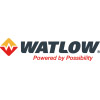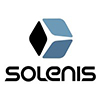-
LO-CAT® II process for H2s oxidation and sulphur recovery
Lubrizol’s facility in LeHarve, France produces a lube oil additive via a batch reaction that uses elemental sulfur as a reactant and produces H2S as a byproduct. Lubrizol selected Merichem’s LO-CAT® II Hydrogen Sulfide Oxidation Process to sweeten H2S emissions and recover sulfur. The LO-CAT II system was chosen for its ability to handle the process variation in H2S concentration. During the 8-hour batch reaction cycle, H2S concentrations in the effluent gas ...
-
Crystaphase, there is no magic behind reactor performance
It’s not magic. It’s science. Hydroprocessors know the wall that lies between them and peak reactor performance. Fouling, pressure drop, precipitation, agglomeration, polymerization, and catalyst deactivation, these obstacles build up, block by block. We help you break through that wall, clearing your path to performance. With highly specialized expertise and unique, industry-proven solutions, Crystaphase has helped refiners all over the world achieve unprecedented ...
-
Accurate flash point determination for low volume samples. The Optiflash Small Scale accurately detects flashpoint in petroleum products, biodiesels, solvents, chemicals, paint varnishes, fluxed bitumen, food and beverages. There are three models available: regular, low temperature and high temperature. The OptiFlash Small Scale is fully compliant with leading global standards.
-
Meet emission challenges with reliable Claus tail gas unit performance
Meet emission directives while improving your sulfur management. In today’s oil and gas industry, maximizing sulfur recovery from off-gases is extremely important. Regulations get tighter, forcing operators to constantly optimize the efficiency of their sulfur management units. Adding a tail gas treating plant to your Claus unit will enable you to meet the most stringent emission targets for final sulfur removal from the off-gases. The effluent from a Claus plant is the ...
-
Multi-cassette designs provide a new option for mist elimination
In many industrial processes, the entrainment of liquid in gas streams can lead to damage to compressors or filler materials such as molecular sieves or, at the very least, reduction of throughput. The formation and the size of liquid droplets in the gas stream are determined mainly by the process application. With the wide variation of entrainment and processes, various technologies continue to develop to best meet those needs. New Mist Elimination Technology The Sulzer MKS ...
-
TRI-CON Ball & Gate Valve Replacement
TRI-CON Features & Benefits: Features - Unique triple-offset, conical seating, Metal-to-metal seating, Unique, self-centering disc design, Emission-control technology, Superior bearing/bushing design, Laminated seal ring. Benefits - Zero leakage in demanding services, Inherently firesafe, Low torque required, Elimination of jamming due to thermal expansion, Bi-directional shutoff capabilities.
-
Watlow® is now offering WATCONNECT® standard control panels that are quickly configured to your specific application requirements and delivered within two weeks. WATCONNECT panels integrate Watlow’s high-quality heater, sensor, temperature controller and power controller products for a complete thermal solution. Normally, competitive custom panels require significantly longer lead times. The broad range of standard features allow customers to quickly configure panels ...
-
Fluid Catalytic Cracking (FCC) additive for butylenes maximization BASF’s newest additive, Evolve®, maximizes butylenes selectivity and production in the FCCU for refineries who value butylenes production. Technology Evolve is BASF’s newest FCC additive that is designed to deliver LPG with preferential selectivity towards butylenes over propylene versus conventional olefin additives. This additive is well suited for refineries that aim to maximize alkylate. Evolve converts ...
-
Many attractive projects fail to meet expectations at startup. Disappointing performance often results from bad simulation practices and/or poor equipment design rather than faulty execution. Refineries are currently considering FCC revamps to increase olefins for more alky unit feed, maximize LCO product recovery, and minimize slurry product by producing HCO for hydrocracker feed. These changes raise fractionator operating temperature. Higher temperatures require better process ...
-
Enabling Power-to-X Transformations
For efficient efuels and chemicals production. Our strategy is for a world that is cleaner and healthier, today and for future generations. As the chemical industry embarks on its net-zero journey, we will apply our expertise in decarbonisation and circularity to provide enabling solutions. This fast paced market requires low risk technologies that can be deployed at scale. Feedstock efficiency, low technology risk, and optimised project execution are key for successful ...
-
Top of Side Entry? Your Choice
The capacity of LNG plants has significantly increased over the years and geopolitical conflicts will likely push the market to new Liquefaction facilities, carriers, LNG terminals and regasification units. Valves are a critical component at each stage. Valve performance and reliability are vital to the whole process. The unique design, high quality manufacturing and material selection of Zwick Armaturen makes them ideal for LNG installations and other Cryogenic applications.
-
Ultra-light crudes and condensates are here to stay. These streams have flooded the market in recent years, and many of them are deeply discounted against reference crudes. Refiners have been processing increasing percentages of this light material through their Crude Distillation Units (CDUs) up against unit naphtha handling limits. On the surface, processing condensate and other ultra-light crudes with high API gravity and low sulfur should be easy. In reality, many refiners ...
-
Innovation in design: We design our own catalyst carrier utilising our strength of 40 years’ experience in the Ceramics industry. Catalysts are formed using polymer ceramic technology rather than the traditional pressure method, which provides higher intrinsic strength, greater geometric surface area and surface texture. Textured Surface Technology: Texture on the Magcat spherical shape creates a 30% improvement in active surface area, increasing the effective reaction zone ...
-
Optimising the efficiency of shutdowns and turnarounds to improve processes
Tracerco’s diagnostic techniques provide you with the invaluable insights you need to reduce your turnaround times and costs by identifying operational process problems and mechanical integrity of internals in real-time and whilst online. Tracerco’s level, density, interface and multiphase nucleonic instrumentation provides invaluable insights to help you make informed decisions to increase profits, manage risks and reduce costs. Making data-driven decisions can significantly ...
-
Decarbonizing process heat with industrial heat pumps and steam compressors
Industrial energy consumption accounts for about 25% of energy demand and CO2 emissions worldwide, with process heat being the most common application. Hydrocarbon and basic chemical processing plants are particularly process heat-intensive. Heat demand for basic operations distillation and heating of fluids in US industry is about as energy intense as all other industrial heat applications combined. At the same time, there is a vast, unused potential for waste heat in many plant ...
-
Proven decarbonisation pathway for sustainable biofuels and chemicals production from waste
The flexibility to make use of varying waste streams as feedstocks to replace primary fossil resources is a common goal in operations today. You may be looking at sources such as woody and agricultural biomass, MSW, RDF, SRF, sewage sludge, or non-recyclable plastic to produce bio or circular chemicals or sustainable fuels: Bio Syngas, green hydrogen, SAF, sustainable maritime fuels, or BioMethanol. The key question is how to decarbonize these assets to meet sustainability and ...
-
Introduction to Sinopec Steam Cracking Technology
Sinopec has been committed to the development and application of steam cracking technology for almost 40 years, and has mastered advanced and complete ethylene technology which can process a variety of feedstocks, including CBL cracking furnace technology, 3 major ethylene recovery technologies (LECT, ART and AERP) and WAO. This webinar will introduce the technology and its applications, with an emphasis on how it can be applied in a variety of plants. By attending, you will ...
-
Introduction to the Sinopec Closed Coke Handling System
The Sinopec Closed Coke Handling System (S-CCHS) is a safe and eco-friendly closed petroleum coke removal, conveying, and storage system with remote intelligent operation for pollution-free coke removal. This webinar will introduce the technology and its applications, with an emphasis on how it can be applied in your delayed coking unit operations. By attending, you will gain insights into: - Components and operation of the S-CCHS technology - How S-CCHS can eliminate ...
-
Innovative solutions to shape the hydrogen economy
View this webinar for an insightful journey into the future of sustainable energy with Honeywell H₂ Solutions. In this exclusive webinar, we'll delve into cutting-edge innovations in hydrogen technology, focusing on Blue Hydrogen solutions and Liquid Organic Hydrogen Carriers (LOHC). Attending will offer these valuable benefits: - Discover how Honeywell is leading the way in transforming the energy industry through Blue Hydrogen, a game-changing process that reduces carbon ...
-
Covering your streams with gas chromatography: Analytical technique and key applications
Gas Chromatography is a critical part of any analytical lab in the refining process. It is such a standard that operators take for granted all the ways it is used. Join us as we will be touching on the importance of GC in the lab, what goes into selecting a unit, and three key applications seen in many labs: Refinery Gas Analysis, Group type Analysis with Reformulyzer pre-frac, and Simulated Distillation. In this webinar we will: - Give an overview of the importance of GC ...
-
Beyond processbook & PI vision: Exploring today’s industrial analytics tools
In the Manufacturing 4.0 era, industrial organizations have more data at their fingertips than ever, offering the promise of higher production rates, more consistent quality, and reduced costs through data-driven strategies. Standing between many businesses and this promise of process optimization are questions surrounding the right tools to harness this data effectively – a choice complicated by the shifting status of longtime standard OSIsoft’s ProcessBook and PI Vision ...
-
Overcoming roadblocks to decarbonisation
Reducing global CO2 emissions and limiting the increase in global average temperature to 1.5°C is probably the greatest challenge humanity has ever faced. The continuous increase in strength and frequency of natural disasters accompanied with record-high temperatures have drastically accelerated the need to take action to reduce our carbon impact. There is a global consensus between governments, companies, and the public that there is a need to decarbonise our societies and, ...
-
Biofilm: A hidden threat to refining and petrochemical operations
Did you know that a seemingly insignificant amount of biofilm can negatively affect heat exchanger reliability and efficiency and, as a result, significantly limit production? Attend this webinar from Solenis to gain valuable insights into risks and solution methodologies for biofilm issues. • Learn how biofilm can affect your profitability and production efficiency • Explore novel technologies from Solenis that mitigate the risks posed by biofilm • Hear about a leading ...
-
Mission critical electric heat tracing solutions to support the energy transition
Around the globe, clean fuels are helping reduce carbon emissions. And world leaders have pledged to invest in technologies such as carbon capture and hydrogen to help accelerate the clean energy transition. Biofuels, hydrogen, liquefied natural gas and carbon capture technologies are driving the transition to clean fuels and CO2 reduction. This webinar gives you the opportunity to learn how nVent RAYCHEM solutions for the energy transition markets can enable and optimize your ...
-
New digital tools to improve operational profitability in refineries
View this webinar to learn how you can leverage new digital tools as part of the Honeywell UOP upgraded PremierPLUS Performance Services offering to avoid unplanned downtime, optimize process performance, manage personnel changes, and reduce energy and emissions. The PremierPLUS Performance Services offering addresses these challenges and can improve operational profitability by an average of $1M to $5M per year. Attending this webinar will give you an overview of Honeywell ...
-
Maximizing renewable diesel and sustainable aviation fuel yields with ISOTERRA Technology
Investments in renewable diesel (RD) and sustainable aviation fuel (SAF) production are gaining considerable momentum and are expected to play a vital role in reducing carbon emissions for heavy-duty transportation. Currently, the majority of these projects focus on the production of HEFA (Hydroprocessed Esters and Fatty Acids). Chevron Lummus Global combines the renewable processing catalyst experience and technology of ART's ENDEAVOR™ catalyst system, CLG's hydroprocessing ...






































